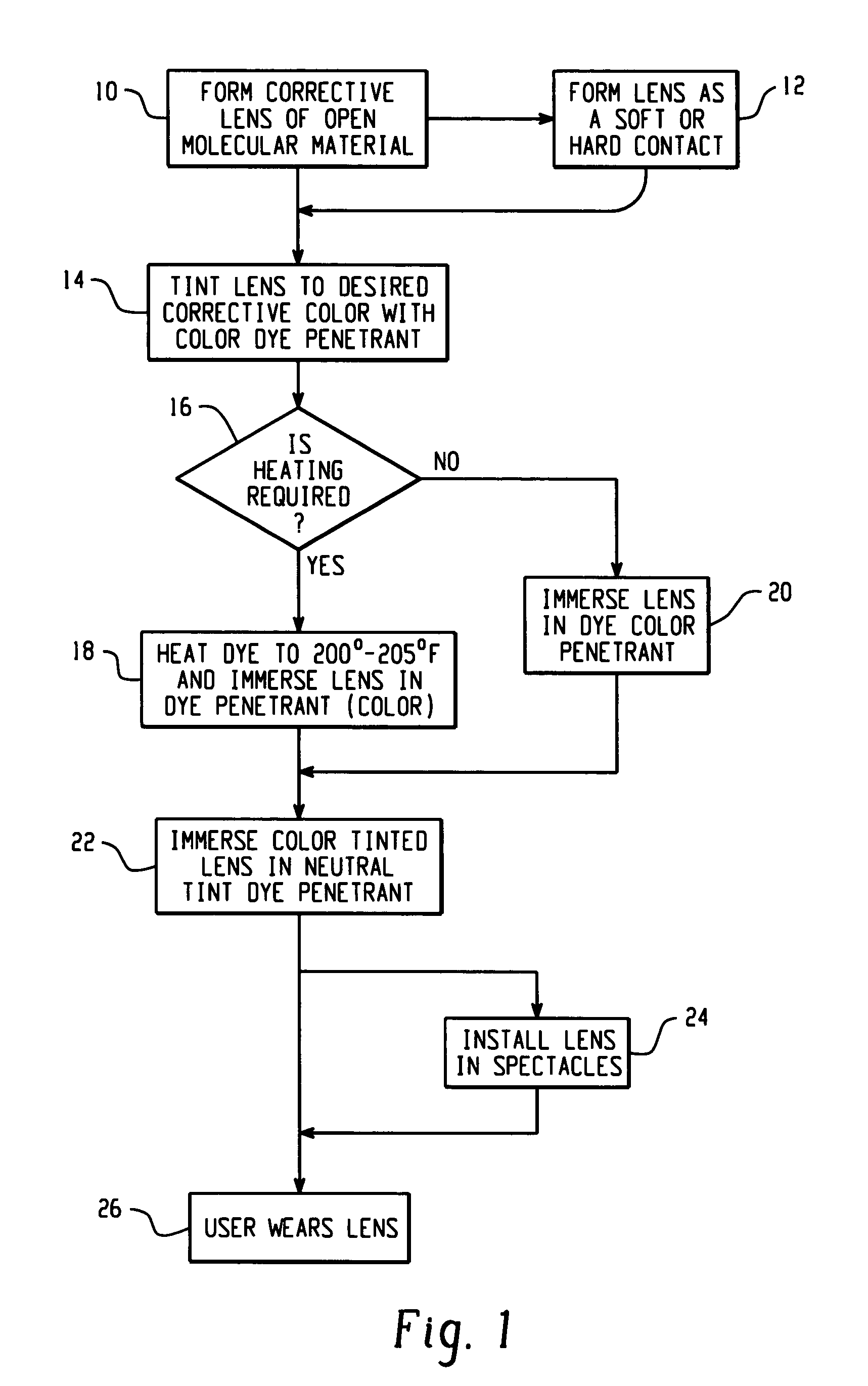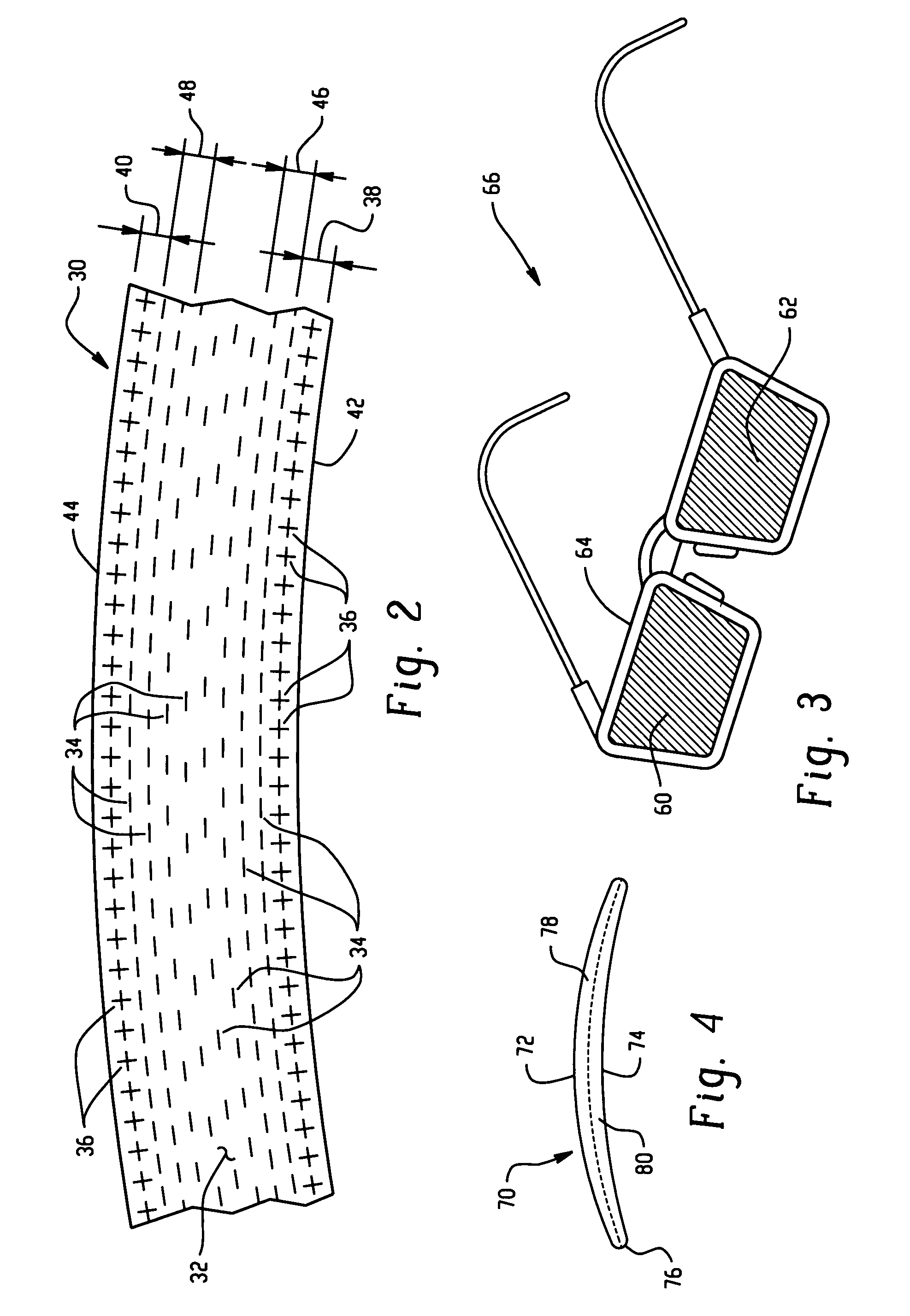Tinted lens and method of making same
a technology of tinted lenses and lenses, applied in the field of tinted lenses, can solve the problems of cosmetically unacceptable appearance, spectacles may produce an image that is too dark for the wearer, and the presence of mirror reflective surfaces on the lens is cosmetically unacceptabl
- Summary
- Abstract
- Description
- Claims
- Application Information
AI Technical Summary
Benefits of technology
Problems solved by technology
Method used
Image
Examples
Embodiment Construction
[0012]The present disclosure relates to a lens and to a method of making such lenses. The lenses may be used for correcting the inability of a person to perceive colors properly or color blindness or to alleviate many of the symptoms of dyslexia in a patient. The exemplary lens selectively filters light transmitted through the lens to provide filtered light which is tailored to the patient's vision. The lens may include an optically transparent base material in which a light filtering material is dispersed. The light filtering material may be a color tint dye or combination of color tint dyes. The appearance of the light filtering material is masked, to the view of an outward observer, by a masking material. The masking material may comprise a neutral tint dye, e.g., one with a slight blue, brown, or gray tint. The masking material may be dispersed in the base material and may be concentrated more highly toward the surface of the lens. As a result, the neutral tint predominates, as ...
PUM
| Property | Measurement | Unit |
|---|---|---|
| wavelengths | aaaaa | aaaaa |
| temperature | aaaaa | aaaaa |
| temperature | aaaaa | aaaaa |
Abstract
Description
Claims
Application Information
 Login to View More
Login to View More - R&D
- Intellectual Property
- Life Sciences
- Materials
- Tech Scout
- Unparalleled Data Quality
- Higher Quality Content
- 60% Fewer Hallucinations
Browse by: Latest US Patents, China's latest patents, Technical Efficacy Thesaurus, Application Domain, Technology Topic, Popular Technical Reports.
© 2025 PatSnap. All rights reserved.Legal|Privacy policy|Modern Slavery Act Transparency Statement|Sitemap|About US| Contact US: help@patsnap.com



